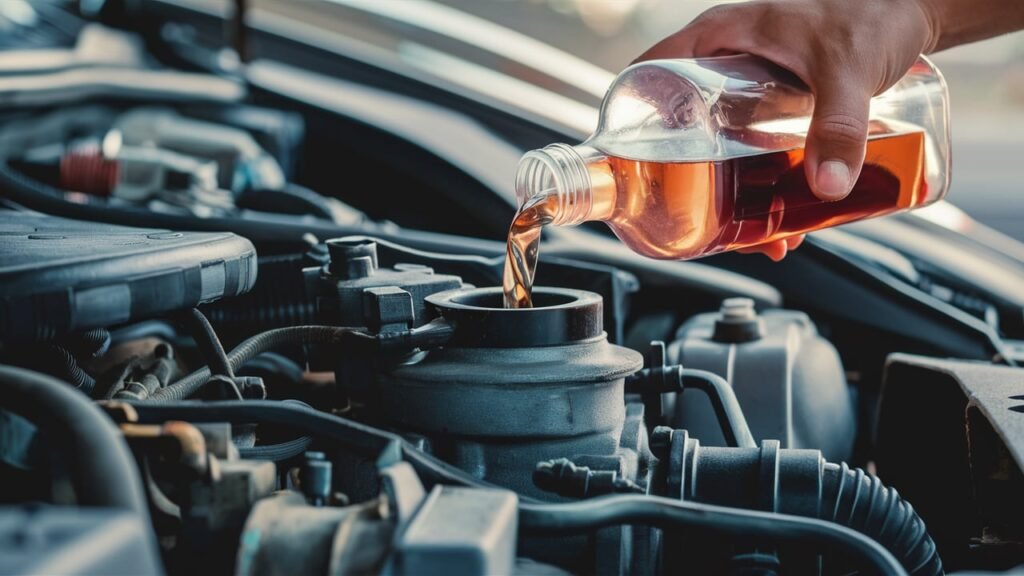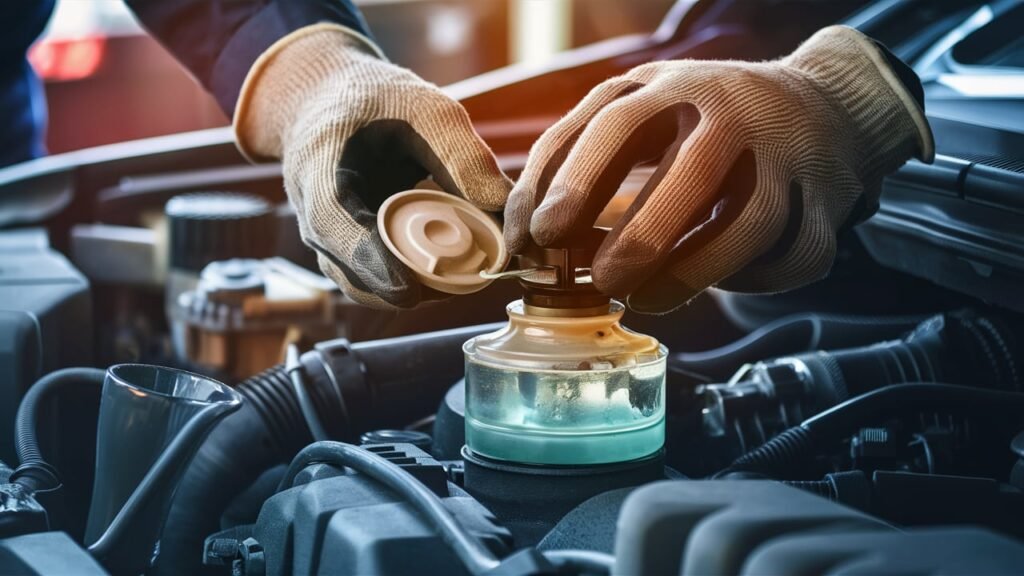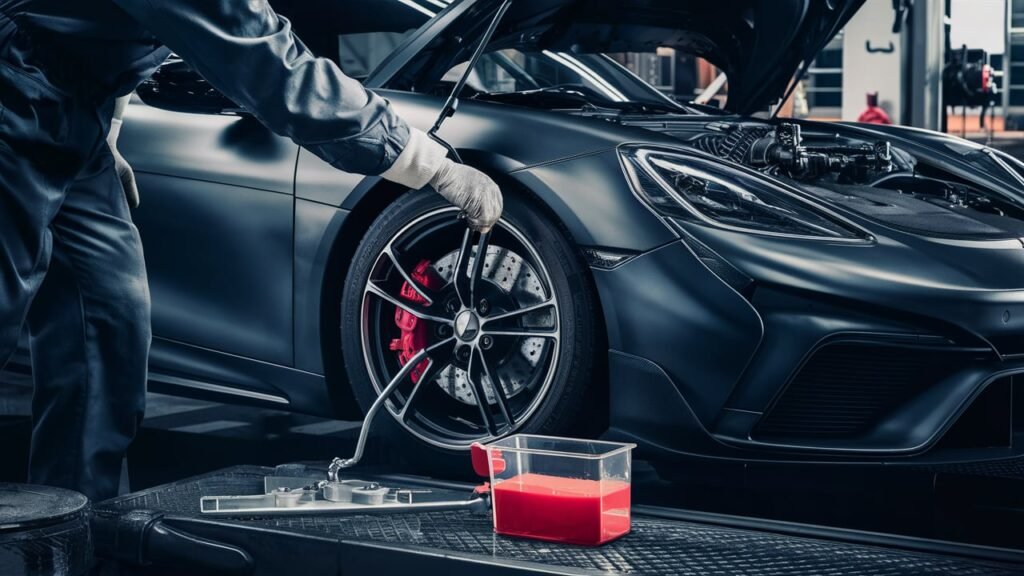
The Essential Guide to Car Engine Brake Fluid Recharge
In the intricate ensemble of components that propels a vehicle, brake fluid assumes a crucial role — often understated but indisputably paramount. Tasked with transmitting force from the master cylinder to the braking mechanisms, brake fluid acts as a silent sentinel ensuring vehicular safety.
Amidst the mechanical symphony under your hood, its significance lies in maintaining hydraulic pressure for the consistent operation of your brakes. An understanding of this unsung hero is foundational to comprehending why an adept handling of car engine brake fluid recharge is indispensable.
To initiate our exploration, delving into the binary realm where science converges with function unveils brake fluid’s composition and raison d’être with pristine clarity. Defined by its non-compressible nature and resistance to heat-induced degradation, this hydraulic elixir blends precision-engineered compounds to uphold braking efficiency.
Unlocking this chemical alchemy reveals not merely a liquid conduit but a linchpin in the symphony of motion control within your vehicle.

Within this discourse on brake fluids course myriad variants, tailored for diverse automotives like subtle artisans crafting bespoke solutions for each mechanical conundrum they encounter – compatibility purveyors in a world ablaze with diversity.
As we embark upon deciphering the intricacies shrouding car engine brake fluid recharges, brace yourself for an expedition heralding enlightenment through every meticulously laid pathway awaiting discovery within these pages.
A journey where knowledge interlaces seamlessly with action; empowering you to wield mastery over the hydraulic lifeblood pulsating beneath your vehicle’s steel veneer.
Signs That Your Car Needs a Brake Fluid Recharge.
During the operation of your vehicle, recognizing signs that indicate a brake fluid recharge is necessary can prevent potential safety hazards. One common indication to watch for is a soft or spongy feeling when applying the brakes, suggesting air may have entered the braking system due to low fluid levels or degradation.
Additionally, if you notice the brake pedal sinking closer to the floor than usual before engaging, it might be time for a brake fluid refill. Another telltale sign is hearing unusual noises like squeaking or grinding during braking, which could signal insufficient brake fluid levels affecting proper system function.
Regularly checking your car’s brake fluid level is crucial for maintaining road safety. Low brake fluid levels not only compromise stopping power but also increase the risk of brake failure. By monitoring and replenishing brake fluid as needed, you ensure that your vehicle’s braking system operates effectively in critical situations.

Moreover, temperature changes can impact brake fluid quality over time. Extreme heat exposure can lead to brake fluid deterioration, potentially causing vapor lock or boiling within the hydraulic system, reducing braking efficiency during demanding driving conditions.
Understanding these signs and how external factors like temperature affect your vehicle’s brake fluid highlights the importance of periodic checks and recharges for optimal performance. By staying proactive in monitoring your car’s braking system health, you can address issues promptly and maintain safe driving conditions on various road surfaces and environments.
How to Perform a Car Engine Brake Fluid Recharge.
Performing a car engine brake fluid recharge is a crucial maintenance task that ensures your vehicle’s braking system operates effectively. Here is a step-by-step guide on how to execute this process seamlessly:
1. **Locating the Brake Fluid Reservoir:** Start by identifying the location of the brake fluid reservoir in your vehicle. Typically, you can find it near the firewall on the driver’s side under the hood. Refer to your owner’s manual for precise details based on your car model.
2. **Removing Old Brake Fluid:** Before beginning the recharge, ensure the area around the reservoir is clean to prevent contamination. Use a turkey baster or a syringe to extract the old brake fluid from the reservoir. Remember not to reuse this fluid as it may have absorbed moisture or contaminants over time.

3. **Refilling with New Fluid:** Once the old fluid is removed, wipe the reservoir with a lint-free cloth. Proceed by carefully pouring new brake fluid into the reservoir until it reaches the maximum level indicator (as specified in your manual). Be mindful not to spill any fluid onto painted surfaces as brake fluid can damage paint.
4. **Choosing Appropriate Brake Fluid:** Selecting the right type of brake fluid is vital for optimal performance and safety. Different vehicles require specific types of brake fluids, such as DOT 3, DOT 4, or DOT 5, so refer to your manual or consult with an automotive professional if unsure.
By following these steps diligently and employing caution, you can successfully perform a car engine brake fluid recharge and contribute to maintaining your vehicle’s braking efficiency.
Safety Precautions During Brake Fluid Recharge.
Ensuring safety during a brake fluid recharge is paramount to prevent accidents and maintain the effectiveness of the braking system. Firstly, always wear appropriate protective gear such as gloves and goggles when handling brake fluid.
This precaution safeguards your skin and eyes from potential harm as brake fluid can be corrosive upon contact. Additionally, work in a well-ventilated area to minimize inhalation of fumes that may emanate while handling the fluid.
To avoid contamination and spills during the refill process, it is essential to clean the area around the brake fluid reservoir thoroughly before opening it. Contaminants like dust or debris should not enter the system as they can compromise its functionality.

When refilling, use a clean funnel specifically designated for brake fluid to prevent mixing with other fluids that might be harmful to the braking system. Any spills should be promptly cleaned using an approved absorbent material to prevent accidents or environmental damage.
Proper disposal of used brake fluid is crucial for environmental safety. Instead of discarding it haphazardly, consult local regulations or recycling centers for guidance on how to dispose of it responsibly.
Many auto parts stores offer recycling services for used automotive fluids like brake fluid, ensuring it does not pollute water sources or soil. By adhering to these safety precautions diligently, you not only protect yourself but also contribute to maintaining a cleaner environment for all road users.
Testing Braking System Functionality After Recharging Brake Fluid.
Once you have completed the process of refilling your vehicle’s brake fluid reservoir, it is crucial to verify that the brakes are functioning effectively. One method for testing the brakes post-recharge is to perform a series of controlled stops in a safe environment. Start with gradual braking to ensure proper engagement, then increase the intensity to evaluate responsiveness.
Additionally, check for any unusual noises or vibrations during braking, as these could indicate underlying issues.
Air bubbles trapped in the braking system can significantly impair performance after a brake fluid recharge. To address this potential problem, consider bleeding the brake lines to eliminate air pockets. Bleeding involves purging air from the system by opening specific valves while adding fresh fluid until no more air escapes.

This process helps restore optimal hydraulic pressure, ensuring consistent and reliable braking power.
In some cases, common issues may arise even after successfully recharging the brake fluid. If you encounter spongy or unresponsive pedals, it could point to lingering air bubbles or possible leaks within the system.
Address such concerns promptly by revisiting the bleeding process or inspecting components like hoses and calipers for wear or damage. Remember that maintaining a meticulous approach to post-recharge testing and troubleshooting is essential for guaranteeing your vehicle’s braking system operates at its peak efficiency and safety standards.
Maintenance Tips for Prolonging Brake System Lifespan.
Regular maintenance is crucial to ensure the longevity and optimal performance of your vehicle’s braking system. Implementing a few key routines can significantly extend the lifespan of your brakes and keep you safe on the road.
One essential practice is to check the brake fluid level regularly and top it off when necessary. Proper levels of brake fluid are vital for ensuring that your brakes function effectively, so this simple task can prevent potential issues down the line.
Periodic inspections by automotive professionals are highly recommended to catch any underlying problems before they escalate. These experts can assess the overall condition of your braking system, including the brake pads, rotors, and calipers, providing valuable insights into any necessary repairs or replacements.

By having your brakes inspected regularly, you can address minor concerns promptly and avoid more extensive – and expensive – damage in the future.
Several factors can influence the efficiency and longevity of newly replenished brake fluid. Environmental conditions like extreme temperatures or humidity levels can impact how quickly brake fluid deteriorates.
Additionally, frequent towing or driving in stop-and-go traffic can contribute to faster wear on the braking system components. Being mindful of these factors and adjusting maintenance schedules accordingly can help preserve both your brake fluid quality and overall braking system performance over time.
By incorporating these maintenance tips into your routine and staying proactive about caring for your braking system, you can ensure a safer driving experience and potentially save on costly repairs in the long run.
Remember that proper upkeep not only enhances safety but also contributes to smoother operation and better longevity for your vehicle’s brakes. Regular attention to these details will go a long way in preserving your car’s braking system for years to come.
Conclusion: Importance of Regularly Monitoring and Recharging Brake Fluid.
In wrapping up this comprehensive guide to car engine brake fluid recharge, it is evident that the upkeep of brake fluid is paramount for ensuring the proper functionality of a vehicle’s braking system.
By understanding the composition and significance of brake fluid, recognizing signs signaling the need for a recharge, and following the outlined procedure for replenishing brake fluid, vehicle owners can maintain optimal safety on the road.
Regular monitoring and timely recharging of brake fluid not only uphold braking performance but also contribute significantly to extending the lifespan of the entire braking system.
Furthermore, adhering to recommended maintenance practices, such as periodic inspections by automotive professionals and implementing necessary safety precautions when handling brake fluids, will aid in preserving the efficiency and reliability of the braking system over time.
As a fundamental aspect of vehicle maintenance, keeping brake fluid at adequate levels should be a routine part of every car owner’s care regimen to ensure smooth operation and overall road safety. In conclusion, maintaining vigilance over brake fluid status stands as a pivotal measure in promoting both driving security and automotive longevity.




